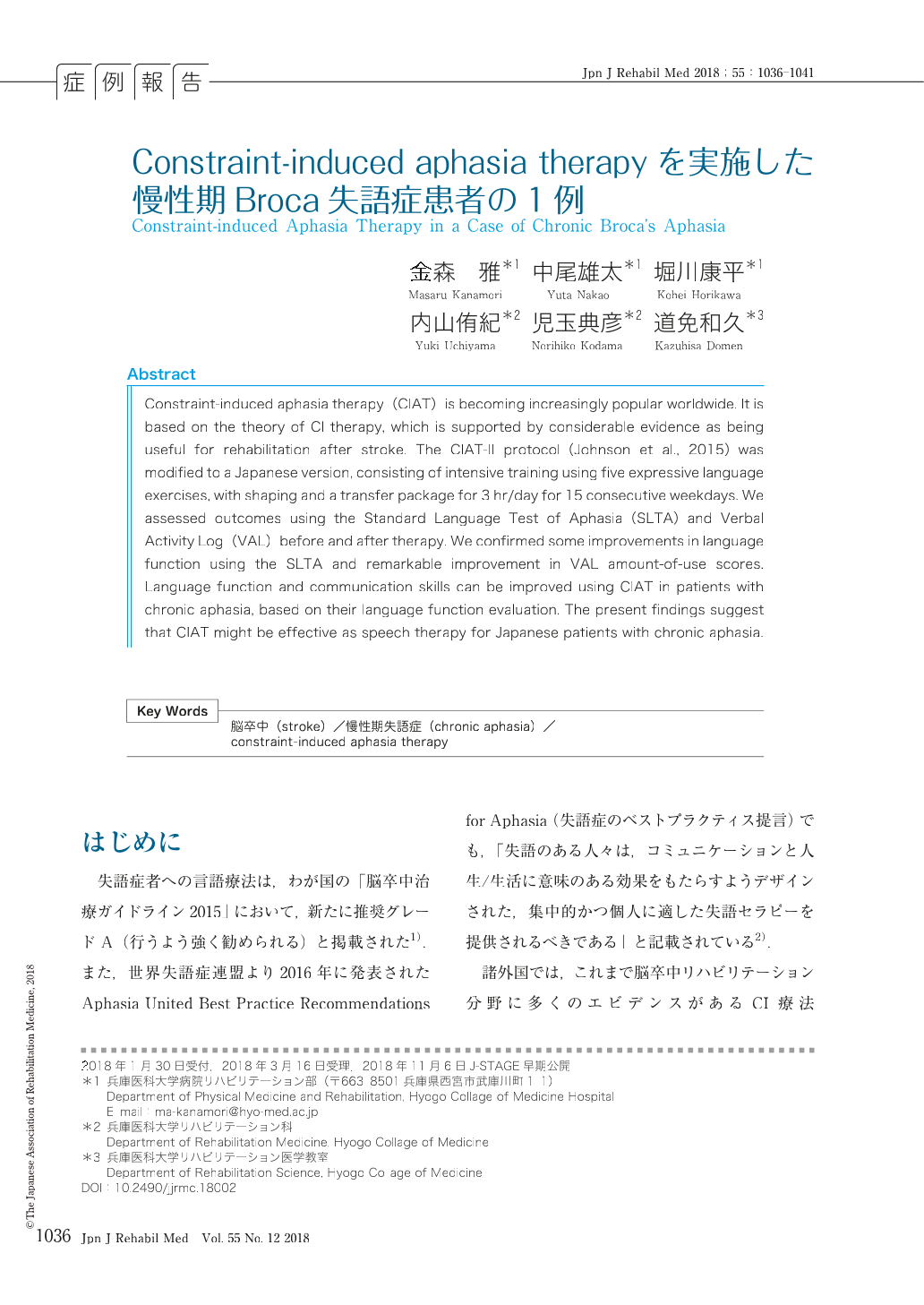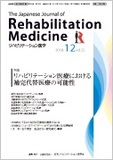Japanese
English
- 販売していません
- Abstract 文献概要
- 1ページ目 Look Inside
- 参考文献 Reference
Constraint-induced aphasia therapy (CIAT) is becoming increasingly popular worldwide. It is based on the theory of CI therapy, which is supported by considerable evidence as being useful for rehabilitation after stroke. The CIAT-II protocol (Johnson et al., 2015) was modified to a Japanese version, consisting of intensive training using five expressive language exercises, with shaping and a transfer package for 3 hr/day for 15 consecutive weekdays. We assessed outcomes using the Standard Language Test of Aphasia (SLTA) and Verbal Activity Log (VAL) before and after therapy. We confirmed some improvements in language function using the SLTA and remarkable improvement in VAL amount-of-use scores. Language function and communication skills can be improved using CIAT in patients with chronic aphasia, based on their language function evaluation. The present findings suggest that CIAT might be effective as speech therapy for Japanese patients with chronic aphasia.
Constraint-induced aphasia therapy (CIAT) is becoming increasingly popular worldwide. It is based on the theory of CI therapy, which is supported by considerable evidence as being useful for rehabilitation after stroke. The CIAT-II protocol (Johnson et al., 2015) was modified to a Japanese version, consisting of intensive training using five expressive language exercises, with shaping and a transfer package for 3 hr/day for 15 consecutive weekdays. We assessed outcomes using the Standard Language Test of Aphasia (SLTA) and Verbal Activity Log (VAL) before and after therapy. We confirmed some improvements in language function using the SLTA and remarkable improvement in VAL amount-of-use scores. Language function and communication skills can be improved using CIAT in patients with chronic aphasia, based on their language function evaluation. The present findings suggest that CIAT might be effective as speech therapy for Japanese patients with chronic aphasia.

Copyright © 2018, The Japanese Association of Rehabilitation Medicine. All rights reserved.


